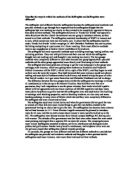Although the Millicent Fawcett led suffragists were making steady progress, some campaigners were angry at the time it was taking for them to succeed and felt the campaign needed a different, more direct approach. A firm believer in this was Emmeline Panckhurst so much so that she and her daughters set up the WSPU (Women’s Social and Political Union) later to become known as the suffragettes. They had completely different ideas about how to gain suffrage for women; they believed that the peaceful, very proper campaign being used by the suffragists was going nowhere fast. So they believed that they needed to do something different they chose to try and gain suffrage by any means possible whether it was legal or illegal, as they felt any actions were justifiable in their fight for the suffrage they felt women deserved. A significant example of this is when Emmeline’s daughter christabel spat in a policeman’s face, she was subsequently arrested tried and sentenced to a custodial sentence which is what she wanted as it gained huge publicity for their cause but it was bad publicity society in general was outraged at what this woman had done. They saw any publicity as good publicity, as it put their issue in the public eye.
The suffragists always used the same method, a peaceful protest. They would create petitions, hand out leaflets, they would politely ask MP’s to attend their lobbies and meetings and listen to their thoughts. They believed their peaceful protest and strength of argument would win over the support of the men in high up places and therefore give them what they wanted.
On the other hand the suffragettes had a much more intense way of campaigning. Rather than invite MP’s to their discussions they would go and disrupt parliament, or hunt down MP’s in the street or at their homes and make loud brash protests. They would deliberately try and get arrested to show their commitment and to gain publicity. This continued with widespread window breaking, arson and violent attacks on people. Once in prison the women would go on hunger strike, and the government couldn’t possibly let women in prison die for such petty crimes. So they decided to force feed the women, this was a very unpleasant and degrading experience for the campaigners, and this came out in the press and was a positive thing for the suffragettes. The government’s reaction to this was to introduce the Cat and Mouse Act which meant women on hunger strike would be released until fit to re-enter prison. By the time this Act was brought into place, the suffragettes had really upped their campaign. They felt the Liberals who they had previously supported had not given them recognition or support so they intensified the law breaking. Window breaking increased including Number 10 as one of its victims, post boxes were set on fire and Emily Davidson killed her self due to jumping in front of the Kings horse at the Derby which caused outrage among the men in higher circles. There were even plans to make and set off bombs in public places. The Suffragettes were getting out of hand had turned into a terrorist group, while the suffragists continued with their petitions and letter writing.
The main differences in methods between the two groups are that the suffragists had a peaceful rigid plan which they stuck with throughout, whereas the suffragettes had a disruptive campaign that escalated into an out of hand violent campaign. They started off with the same aims but then they divided into two groups with opposite attitude. The suffragists felt that the suffragettes were jeopardising the years of work they had put towards the cause through their violent actions, and although they were gaining publicity it was bad publicity which was loosing them support, and they were even referred to as the cause’s worst enemy. The suffragists saw the government as their key to gaining suffrage whereas the suffragettes saw men as their enemy and felt they had to pressure and intimidate them into giving women suffrage.







